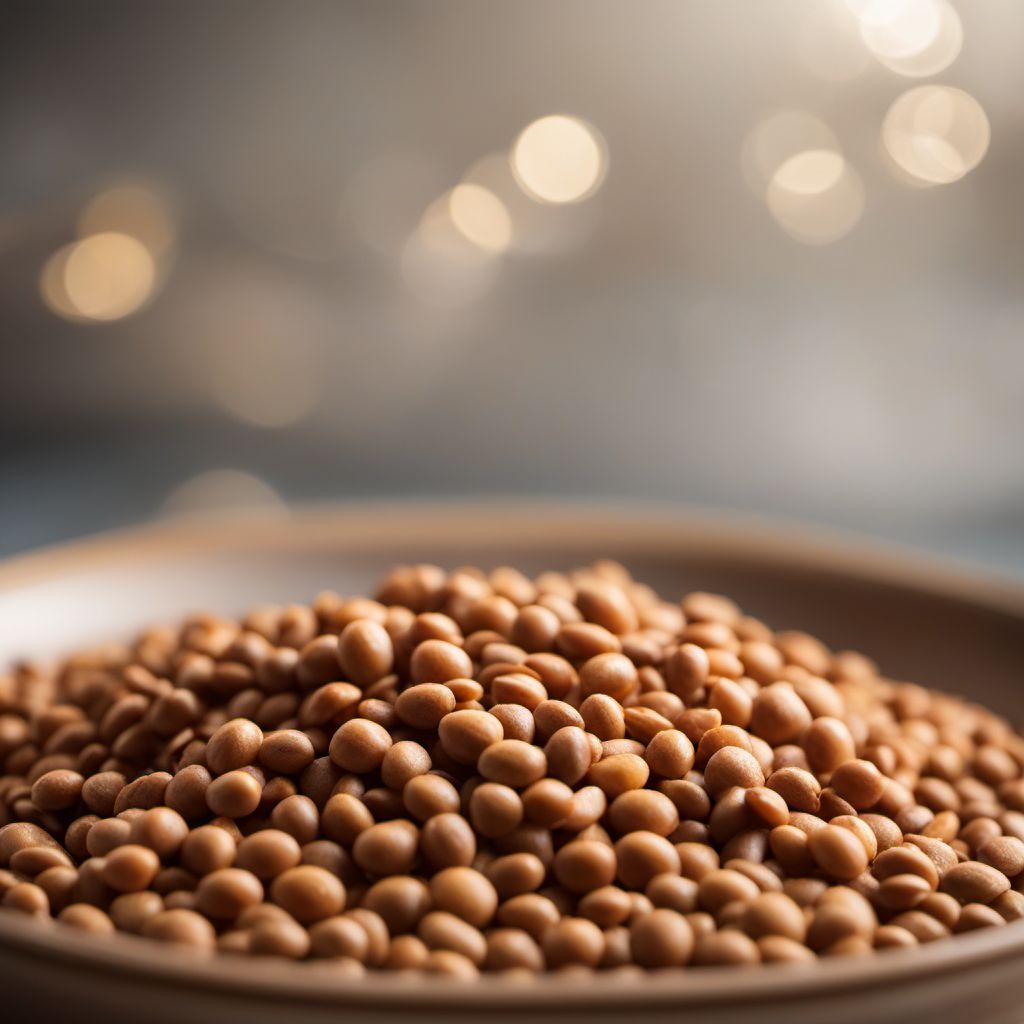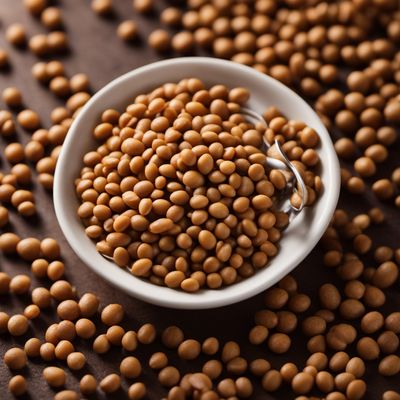
Ingredient
Lentils and similar-
Versatile Legumes
Lentils and similar legumes are small, lens-shaped seeds that come in different colors, including green, brown, red, and black. They have a firm texture and a nutty, earthy flavor. These legumes are a staple in vegetarian and vegan diets due to their high protein and fiber content.
Origins and history
Lentils and similar legumes have been cultivated for thousands of years and have a rich history in many cultures. They are believed to have originated in the Middle East and have been a dietary staple in regions like India, the Mediterranean, and South America.
Nutritional information
Lentils and similar legumes are an excellent source of plant-based protein, fiber, and essential minerals like iron and folate. They are also low in fat and cholesterol, making them a healthy addition to any diet.
Allergens
Lentils and similar legumes may cause allergic reactions in individuals with legume allergies. It is important to consult with a healthcare professional if you suspect an allergy.
How to select
When selecting lentils and similar legumes, look for packages that are free from moisture, insects, or any signs of spoilage. Opt for organic or locally sourced varieties whenever possible.
Storage recommendations
To store dried lentils and similar legumes, keep them in a cool, dry place in airtight containers to prevent moisture and insect infestation. Cooked legumes can be stored in the refrigerator for up to a week or frozen for longer-term storage.
How to produce
Lentils and similar legumes can be grown in home gardens or small-scale farms. They require well-drained soil and regular watering. However, they are more commonly purchased dried or canned from grocery stores.
Preparation tips
Before cooking lentils and similar legumes, rinse them thoroughly and remove any debris or stones. They can be cooked by boiling in water or broth until tender. They are versatile ingredients that can be used in soups, stews, salads, or as a meat substitute in various dishes.
Substitutions
Different varieties of lentils, such as green, brown, or red lentils, can be used as substitutes for each other. Other legumes like chickpeas, black beans, or kidney beans can also be used as alternatives depending on the recipe.
Culinary uses
Lentils and similar legumes are commonly used in dishes like lentil soup, dal, hummus, chili, or bean salads. They are also a popular ingredient in vegetarian and vegan dishes as a meat substitute.
Availability
Lentils and similar legumes are cultivated and consumed worldwide. They are readily available in grocery stores, supermarkets, and specialty food stores in various countries.
